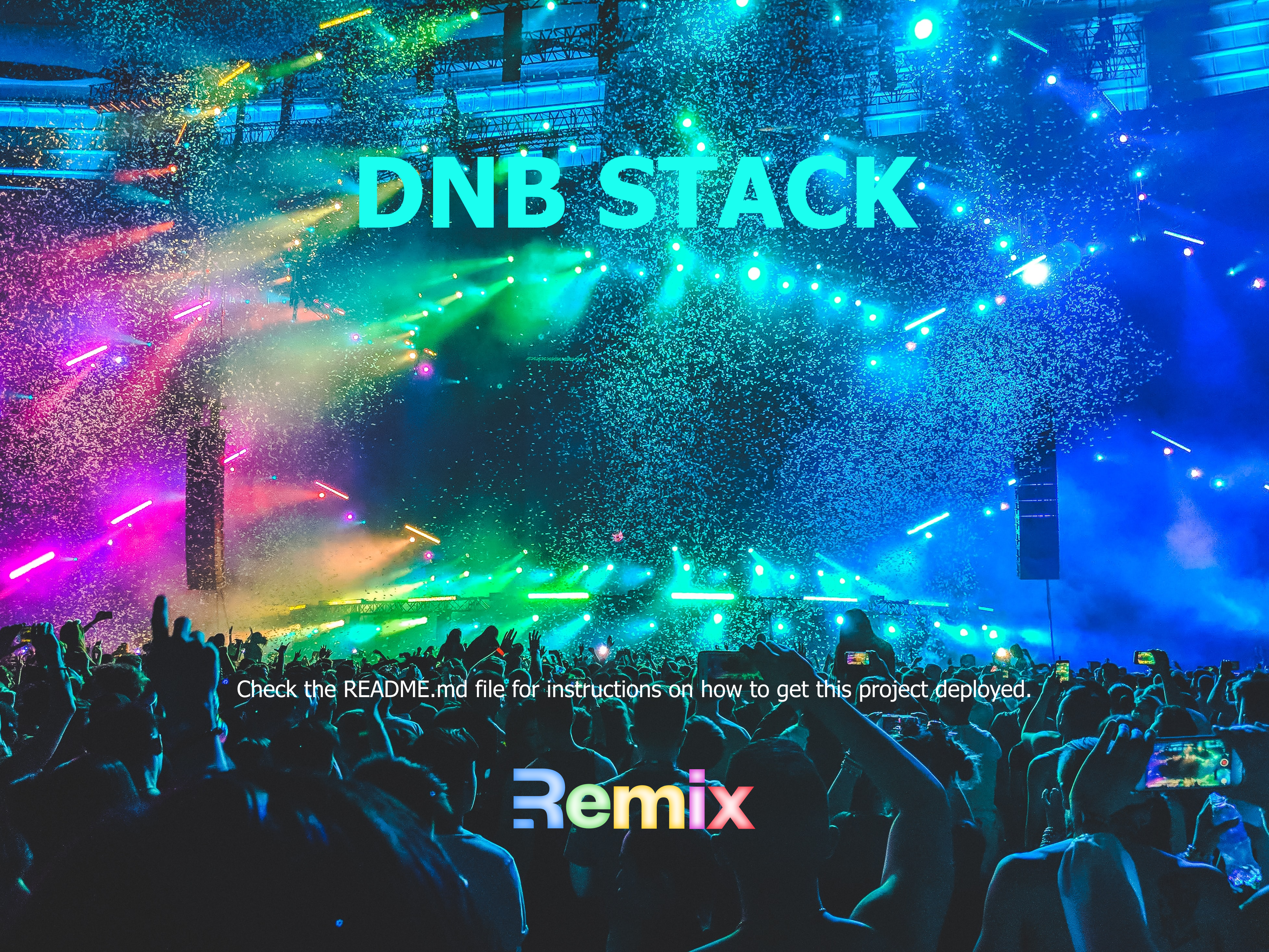Awesome
Remix DnB Stack

See it live: https://dnb-stack.vercel.app/
Learn more about Remix Stacks.
npx create-remix --template robipop22/dnb-stack
What's in the stack
- Vercel deployment with Vercel CLI
- GitHub Actions for deploy on merge to production and staging environments (all working via branching system)
- Proposed opinionated folder structure for the project
- Mocked api request for the project and route example
- Styling with Tailwind
- End-to-end testing with Cypress
- Unit testing with Vitest and Testing Library
- Code Formatting with Biome
- Code Linting with Biome
- Static Types with TypeScript
- Pre-commit hooks using Husky
Not a fan of bits of the stack? Fork it, change it, and use npx create-remix --template your/repo! Make it your own.
Development
Make sure the dependencies are installed
bun i
Afterwards, start the Remix development server like so:
bun dev
Open up http://localhost:3000 and you should be ready to go!
Go to localhost:3000/books and you should see a list of books. This is a simple example of how to integrate a 3rd party API (tested, typed and mocked).
Precommit hooks
We use Husky to run a pre-commit hook to lint the code.
This prevents us from having to run the linters into our pipelines. It will not let you commit if you have linting errors.
The pre-commit hook will run the following commands:
bun hook
You can move this step into a github action, or run it manually. But this method is faster for development as you won't have to wait for the hook to run in the pipeline.
Relevant code
This is a basic app that contains two routes, the index for documentation and the /books as a living example of how you can integrate a 3rd party API. The data is mocked and typed and also there is a both unit tests for the client function as well as a cypress test for the respective route.
Deployment
This stack has a github action for automated deploy on merge on the following branches: qa, dev or main.
You just need to specify and configure the subdomains of your app. Also from the settings in the repository you need to add Actions secrets so that the github action can deploy your app:
- VERCEL_ORG_ID
- VERCEL_PROJECT_ID
- VERCEL_TOKEN
If you'd like to avoid using github action deploy, you can also deploy the directory by running Vercel CLI:
npm i -g vercel
vercel
GitHub Actions
We use GitHub Actions for continuous integration and deployment. Anything that gets into the main branch will be deployed to production after running tests/build/etc. Anything in the dev branch will be deployed to staging. There is a also a qa branch that is used for testing.
Testing
Cypress
We use Cypress for our End-to-End tests in this project. You'll find those in the cypress directory. As you make changes, add to an existing file or create a new file in the cypress/integration/e2e directory to test your changes.
We use @testing-library/cypress for selecting elements on the page semantically.
To run a specific test(flow) in development, run FLOW=books bun cypress:run:flow which will start the dev server for the app as well as the Cypress client. Make sure the app is running.
By flow we want to define some user flows that we will test. For example, if we want to test the app with a user that wants to see the list of books, we can test that by running FLOW=books bun cypress:run:flow.
This can be later extended to run multiple flows. Followed the provided example to extend this further.
Vitest
For lower level tests of utilities and individual components, we use vitest. We have DOM-specific assertion helpers via @testing-library/jest-dom.
You can run the tests with bun run test or bun run vitest:coverage to also show the coverage.
Type Checking
This project uses TypeScript. It's recommended to get TypeScript set up for your editor to get a really great in-editor experience with type checking and auto-complete. To run type checking across the whole project, run bun lint.
Linting
This Project uses Biome for linting. That is configured in biome.json.
Formatting
We use Biome for auto-formatting in this project. It's recommended to install an editor plugin (like the [VSCode Biome plugin]